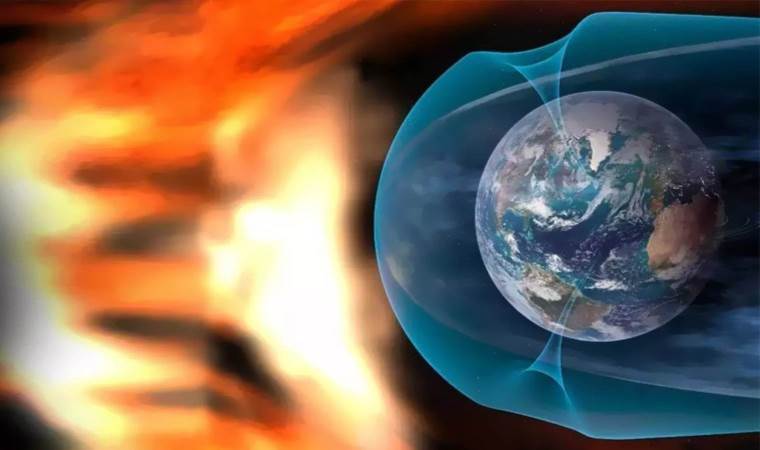Solar storm disrupts radio signals: More expected soon
A solar storm on Monday disrupted radio frequencies over the Pacific Ocean, highlighting the increasing risks of such events, experts say.

Around 11:20 p.m. Turkish time, the western US and South America experienced brief power outages due to the storm. Experts say the event lasted only seconds, but another solar storm is expected to hit Earth today.
Before the storm, the US National Oceanic and Atmospheric Administration's Space Weather Prediction Center (SWPC) estimated a 60% chance of the storm disrupting electric grids.
MORE STORMS ON THE HORIZON
Today's anticipated storm could similarly disrupt radios and aviation communication systems, experts warn.
Space weather physicist Tamitha Skov told Daily Mail, "The risk of radio signal disruption is increasing. Yesterday we experienced two small M-class flares, causing brief R1 level radio blackouts, but soon we could see longer and bigger ones."
SOLAR STORM INTENSITY SCALE
Solar storms, also known as coronal mass ejections, are rated on a scale of 1 to 5, with 5 being the most severe.
Solar storms are also rated using the G-scale, which assesses the intensity of geomagnetic storms:
G1 (Minor): This can cause harmless power grid fluctuations and minor impacts on satellite operations. This may lead to northern lights at high latitudes.
G2 (Moderate): This might cause power grid fluctuations at high latitudes and affect spacecraft operations. Northern lights could be visible at lower latitudes.
G3 (Strong): This can lead to difficulties in voltage control in power systems, significant satellite navigation issues, and disruptions in GPS and low-frequency radio navigation. Northern lights might be visible at even lower latitudes.
G4 (Severe): This can cause widespread voltage control problems in power systems and some protective systems might trip, shutting down key infrastructure. Satellite orientation can be irregular, high-frequency radio transmission periodically disrupted, and northern lights visible at mid-latitudes.
G5 (Extreme): This can lead to widespread voltage control problems and protective systems tripping in some areas, potentially causing collapse. Satellite operations could be severely affected and low-frequency radio navigation disrupted. Northern lights could be visible at low latitudes.
EXPECTED FEATURES OF TODAY'S STORM
NOAA expects today's G1-level storm to cause rapid power grid fluctuations and minor issues in satellite operations.
Skov notes that another storm is imminent, saying, "This storm will graze us several times until January 25, followed by two, maybe three more storms..."
She also assures that the storms won't affect critical infrastructures on Earth but could produce northern lights, known as 'aurora,' in northern countries.
"For aurora enthusiasts, this week will be a real treat as the spectacular aurora we often see on the night side of Earth near the poles is caused by these solar storms," Skov adds.
